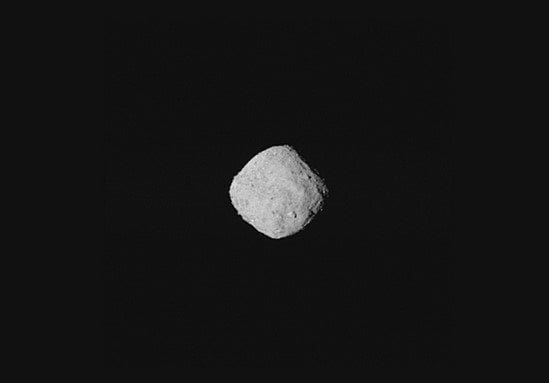It has been over two years since NASA’s OSIRIS REx was launched. Now a new photo of the asteroid Bennu brings us closer to it than ever before. The space agency referred to the photo as a “super-resolution” view of the asteroid.
? ? ? My team created this “super-resolution” view of #asteroid Bennu using eight images I captured with PolyCam on Oct. 29 from about 205 miles (330 km) away. Bennu occupies about 100 pixels, and its north pole is at the top of the image. Details: https://t.co/WM2FXIsweH pic.twitter.com/XeAlCM11oL
— NASA’s OSIRIS-REx (@OSIRISREx) October 30, 2018
OSIRIS-REx’s mission is to study the large, carbon-containing asteroid known as Bennu. Scientists strongly believe this type of asteroid carries the building blocks of life on Earth. The spacecraft is expected to reach the asteroid in a month. In addition to studying the massive space rock, it will also bring back a sample which scientists expect will give them a bigger picture of how the solar system was formed.
The new photo of the asteroid Bennu was made from a series of images taken on Oct. 29, which NASA shared earlier this week. NASA used eight images to create an ultra-clear composite image.
This past weekend, I used PolyCam to snap this image of Bennu spanning 50 pixels from about 480 miles (770 km) away. ? The asteroid’s north pole is toward the top of the image, and a possible boulder formation is visible in the southern hemisphere. More: https://t.co/WeU3kh09gM pic.twitter.com/U9LuHwagdK
— NASA’s OSIRIS-REx (@OSIRISREx) October 31, 2018
“The spacecraft was moving as it captured the images with the PolyCam camera, and Bennu rotated 1.2 degrees during the nearly one minute that elapsed between the first and the last snapshot,” NASA said this week. “The team used a super-resolution algorithm to combine the eight images and produce a higher resolution view of the asteroid. Bennu occupies about 100 pixels and is oriented with its north pole at the top of the image.”
NASA’s OSIRIS REx was launched in September 2016, and it is expected to reach Bennu in December. It carries a set of five scientific instruments that will be used to explore the asteroid. In addition to returning a carbon-rich asteroid sample and studying Bennu’s surface and composition, NASA’s OSIRIS-REx will also look into how sunlight affects its orbit and document its regolith, the layer of material covering its surface. The asteroid sample will be returned to Earth in 2023.
Researchers at the Instituto de Astrofisica de Canarias (IAC), said the new photo of the asteroid Bennu is just the first of more exciting observations to come.
“In December 2018 we will start to obtain images with MapCam, also one of the cameras of the mission, using color filters,” IAC researcher Javier Licandro said in a statement. “This will allow us to generate color maps and to study the geographical distribution of different materials on Bennu, including silicates altered by the presence of liquid water.”





